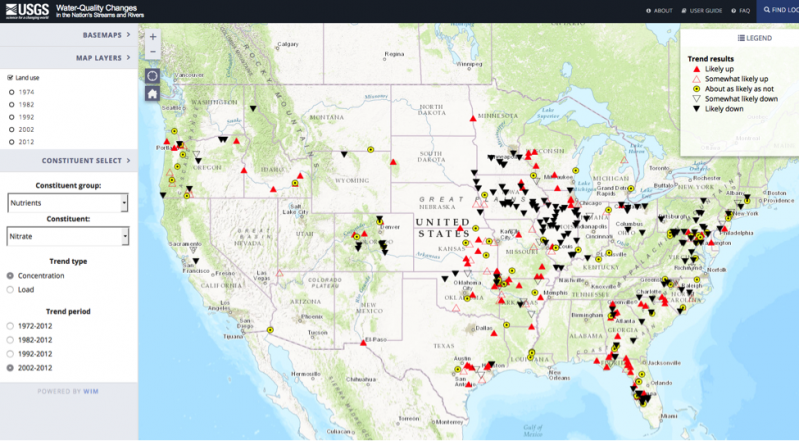USGS Map Provides Long-term Look at River Water Quality
Published on by Water Network Research, Official research team of The Water Network in Technology
A new U.S. Geological Survey (USGS) interactive map provides a comprehensive, long-term look at changes in the quality of U.S. rivers and streams over the last four decades.

For the first time, monitoring data collected by the USGS and 73 other organizations at almost 1,400 sites have been combined to provide a nationwide look at changes in the quality of our rivers and streams between the 1972 passage of the Clean Water Act and 2012.
Federal, state, and local agencies have invested billions of dollars since passage of the Act to reduce the amount of pollution entering rivers and streams that millions of Americans rely on for drinking water, recreation, and irrigation.
Tracking changes in the quality of these waterways over multiple decades is crucial for evaluating the effectiveness of pollution control efforts and protecting the nation’s water resources into the future.
The interactive map can be used to see whether 51 water-quality constituents, like nutrients and pesticides, and 38 aquatic-life metrics, like the types and numbers of fish, macroinvertebrates, and algae, have increased, decreased, or remained the same at nearly 1,400 sites between 1972 and 2012.
For example, the phaseout of the insecticide diazinon for residential and some agricultural uses was initiated in 2000 and has led to widespread reductions in concentrations in U.S. streams, which can be seen on the map during the trend period from 2002 to 2012.
The map summarizes the first phase of the study— in which the USGS identifies streams that have been monitored consistently for long periods and reports the trends in those streams. In the second phase, to take place over the next several years, the USGS will assess whether and where billions in investments in pollution control have been effective, identify major causes of trends in U.S. stream quality, provide details on which chemicals are increasing or decreasing, and highlight whether any drinking water sources or aquatic ecosystems are at increased risk.

A new USGS interactive map provides a long-term look at changes in the quality of our nation’s rivers and streams, using data from over 70 organizations. Go online and see how 51 water-quality metrics and 38 aquatic-life metrics at nearly 1,400 sites have changed over the last 40 years.
This map was developed by the USGS National Water-Quality Assessment Project, which conducts regional and national assessments of the nation’s water quality to provide an understanding of current water-quality conditions, whether conditions are getting better or worse over time, and how natural processes and human activities affect those conditions.
Media
Taxonomy
- Water Resource Mapping
- Water Quality
- River Studies
- Hydrodynamics & Water Quality
- Geospatial Information Systems
- River Restoration
- Monitoring & Control
- Hydrology
- Pollution